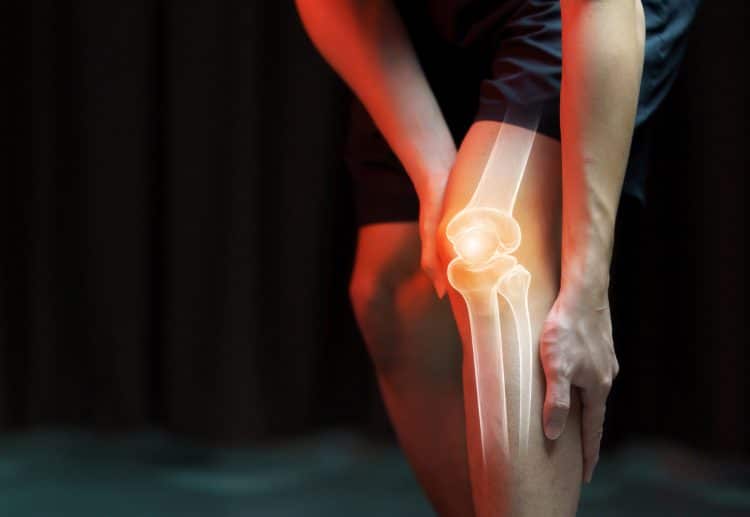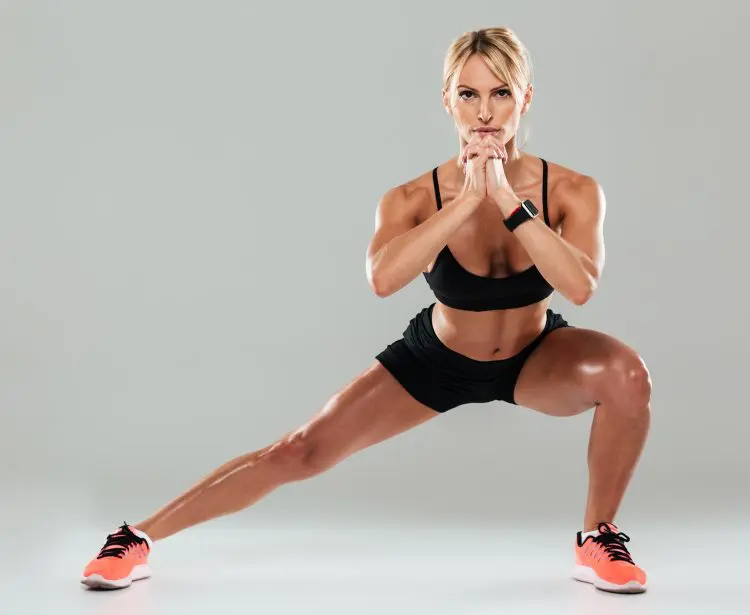Squats are, without a doubt, the crowned king of leg exercises. It doesn’t matter if you do barbell back squats, kettlebell goblet squats, or bodyweight air squats; this exercise will help you achieve your training goals.
The squat is also more than just an exercise – it’s a fundamental movement pattern most people do many times a day. Examples of everyday squats include getting out of bed in the morning, sitting down on the sofa and standing back up, and climbing in and out of your car.
But, as valuable as squats are, they also have a couple of drawbacks. For starters, squats are a bilateral or two-limbed exercise.
Because of this, it’s possible to load one leg more than the other, creating left-to-right strength imbalances. Also, despite being such a productive exercise, you can have too much of a good thing, and doing squats all the time could mean they start to lose some of their potency.
So, while squats most assuredly deserve a place in your workouts, they shouldn’t be your only leg exercise. Adding additional lower body movements will enhance function, prevent boredom, and ensure that your leg workouts are always safe and productive.
Of all the other leg exercises you can do, lunges are arguably one of the most valuable. They offer all the benefits of squats with none of the drawbacks. However, for some exercisers, lunges are a source of knee pain.
Level Up Your Fitness: Join our 💪 strong community in Fitness Volt Newsletter. Get daily inspiration, expert-backed workouts, nutrition tips, the latest in strength sports, and the support you need to reach your goals. Subscribe for free!
In this article, we explain how to eliminate the knee pain from lunges so you can get more from what is one of the best leg exercises around!
Related: Lunges vs. Squats
Causes of Knee Pain During Lunges
The lunge looks like a pretty simple exercise. In fact, they’re often recommended to beginners and seen as a stepping stone to squats, deadlifts, etc. However, the lunge is actually a very technically demanding exercise that’s easy to do incorrectly, and poor form is a leading cause of knee pain.
Of course, some types of knee pain are the result of problems with the joint itself. For example, things like meniscus tears, patellar tendonitis, bursitis, and osteoarthritis can all make your knees hurt during lunges.

But, assuming you have eliminated these possible causes, lunge-related knee pain is more often the result of some technical or performance issue.
Common technique faults during lunges that can cause knee pain include:
Ballistic loading
A lot of people do lunges too quickly. They all but fall into each rep with no attempt to control the eccentric portion of the exercise. This is especially common during forward and walking lunges.
Ballistic loading puts a lot of stress on the patella and patellar tendon at the front of the knee joint.
Instability
Lunges are great for improving stability. Still, if you have problems maintaining correct joint alignment, your knees are going to suffer. Large, uncontrolled medial and lateral movements put a lot of shearing force on the knee joint, which can cause pain and injury.
Uneven weight distribution
When you do lunges, most of your weight should be on your front leg. Your rear leg is there mostly for balance and a small amount of assistance. However, you also need to ensure your weight is evenly distributed from the front of your foot to the back.
Many people put too much weight on the balls of their feet or their heels. Both scenarios increase the stress on the knee joints.
Not engaging the hamstrings/glutes enough
Most people tend to feel lunges in their quads rather than their glutes and hamstrings. Lunges involve knee flexion AND hip extension, so the glutes and hamstrings should be just as active as the quads during lunges. Failure to engage the glutes and hamstrings directs more force into the knee joint, which could be a source of pain.
Keeping your torso too upright or leaning forward too much
The angle of your torso can affect the angle of your front knee during lunges. Ideally, both should be slightly inclined and not completely upright or overly forward. Think of lunges as a single leg squat with rear leg assistance.
As such, your front leg and torso should look like they do during regular squats. If they don’t, you are probably putting unwanted stress on your knee joints.
Doing the same type of lunge over and over

There are lots of different lunge variations, and they’re all effective and beneficial. Doing the same kind of lunge each and every time you work out can cause pattern overload and localized inflammation.
Long story short, don’t just do one type of lunge but rotate your variations so you stress your muscles and joints in different ways.
Lunge options include:
- Forward lunges
- Reverse lunges
- Static lunges (split squats)
- Rear foot elevated split squats
- Walking lunges
- Step-through lunges
- Plyometric lunge jumps
- Lateral lunges
- Deficit lunges
Using too much weight
Once you can do 15-20 lunges per leg, you’ll probably want to try weighted lunges to make your workout more challenging. However, weighted lunges make it harder to maintain good technique and put more stress on your joints. A little weight goes a long way with lunges and will magnify any technical issues you might have.
By all means, add weight to your lunges, but don’t feel you need to grab the heaviest possible dumbbells to do it. Instead, start light and focus on getting more from each rep before you try and load up with heavy weights. In a lot of cases, working on your technique will give you better results than adding weight and doing your reps with sloppy form.
Tips for Pain-Free Lunges
Use these tips to get more from lunges and take the stress off your knee joints.
Fire up your glutes and hamstrings before doing lunges
Prolonged sitting can leave your glutes and hamstrings sleepy and disengaged. Doing lunges with dysfunctional hamstrings and glutes is a recipe for knee pain. Fire up your glute and hamstrings before lunges with some simple isometric exercises.
Level Up Your Fitness: Join our 💪 strong community in Fitness Volt Newsletter. Get daily inspiration, expert-backed workouts, nutrition tips, the latest in strength sports, and the support you need to reach your goals. Subscribe for free!
Stand with your back to a wall. Press one leg back into the wall and tense your glutes and hamstrings for 5-10 seconds. Swap legs and repeat.
Next, stand sideways onto the same wall and push your leg outwards. Contract your outer hips and thighs for 5-10 seconds. Swap legs and repeat.
Do 2-3 sets of each exercise before you start your lunge workouts, and your glutes should be much more active, so your hips and knees are more stable. Plus, you’ll get a much better leg workout.
Use your glutes and hamstrings to pull you forward
When doing walking lunges, try not to push off your back leg to transfer into your next rep. Instead, use the hamstrings and glutes of your lead leg to pull you forward. This simple tip will a) make your workout more effective and b) increase knee and hip stability for less wear and tear on your joints.
Step-stop-down
Prevent knee pain during forward and walking lunges by not collapsing into each rep. Instead, step out, stop, and then descend into your lunge. That way, you turn your forward momentum into downward momentum instead of driving your knee forward into a compromised position.
The step-stop-down method will make lunges feel more like single-leg squats, which, after all, is what lunges actually are. The pause will also allow you to fix your balance and stabilize your knees and hips. Time under tension increases, too, leading to a more demanding workout without adding extra weight.
Pick up your front foot
Many people do lunges by keeping their front foot very close to the floor. This encourages the forward momentum that puts a lot of stress on the lead knee. Fix this problem by picking up your front foot up and high-stepping into each lunge. Imagine you have to step over a low hurdle for each lunge you do.
Take shorter steps
Some people step out way too far when doing lunges. This is usually accompanied by an overextension of the trailing hip and lateral rotation of the pelvis, which can destabilize the knees.
Instead, take shorter steps and keep your rear leg roughly perpendicular to the floor. This will give you a more stable base to work from, make it easier to keep your hips square, and reduce the stress on your hips and knees.
Take off your shoes
Good lunges require a decent amount of balance, but it’s tough to maintain your balance when you can’t feel the floor beneath your feet. If your gym allows it, try doing lunges in just your socks. This will enable you to feel the floor and use your feet to stabilize your ankles and knees. By feeling the floor, you’ll be less dependent on your eyes to maintain your balance.
As an added benefit, doing lunges without shoes will allow you to flex the ball of your foot on your rear leg, which is something that’s much harder to do in shoes. This will also enhance your balance.
Switch to reverse lunges
Reverse lunges are often more knee-friendly than forward and walking lunges. With reverse lunges, it’s much easier to keep your glutes and hamstrings engaged, and there is no forward momentum to overcome. The quads are still active, but they won’t be able to “steal the show” like they do with forward lunges.
You can make reverse lunges even more effective, often negating the need to use extra weight, by standing on a four to six-inch platform and doing deficit lunges. This variation is knee joint friendly but tough on the entire lower body musculature.
Try static lunges
Some people have a real problem with coordination during lunges. That lack of coordination can cause the technical errors that lead to knee pain. This is especially true for beginners. If you are struggling to master lunges, try doing static lunges (aka split squats) instead.
With static lunges, you don’t have to worry about moving or swapping legs and are free to focus on things like balance, posture, and weight distribution. With less to think about, you’ll get a better workout without resorting to using additional weights.
To do a static lunge:
- Take a step forward and stop.
- Bend your legs and lower your rear knee down to within an inch of the floor. Lean forward slightly, so your torso and front shin are roughly the same angle.
- Stand back up and then descend again.
- Repeat for the desired number of reps.
- Rest a moment, swap legs, and do the same number with your other leg in front.
- Do this exercise next to a wall for added balance if necessary.
Use tempo and pauses before adding weight
If lunges are starting to get easier, you may be tempted to start using extra weight. But, before you do, improve your lunge performance and get a better workout by manipulating training tempo and adding pauses. These interventions will make your workout more demanding without putting extra stress on your knees.
To use tempo, simply descend into each rep more purposely. Take 2-3 seconds to lower your rear knee down. This will increase the time under tension and make every rep more challenging.
To use pauses, stop with your knee one inch above the floor and hold it there for 3-5 seconds. As above, this will increase the time under tension and make your lunges more demanding without adding weight.
You can also combine a slower tempo with pauses for an even more intense yet joint-friendly lunge workout.
If you use weight, keep it close to your center of gravity
When you finally progress to weighted lunges, it’s usually best to hold dumbbells or kettlebells down by your sides than a barbell across your shoulders. Holding a barbell raises your center of gravity and makes it much harder to maintain your balance and perform lunges correctly. In contrast, having weights by your sides actually lowers your center of gravity and may enhance your stability and balance.
However, don’t let the weights swing and pull you forward. Instead, maintain tension in your upper body to control the weights. A weighted vest is arguably the safest way to add extra resistance to lunges.
Knee Pain from Lunges – Wrapping Up
Because lunges are a seemingly simple bodyweight exercise, many people underestimate how challenging they are. After all, a lunge is actually a single-leg squat with rear leg assistance, so they’re really quite an advanced exercise.
Watching a lot of people do lunges, it’s clear that technique is the last thing they’re thinking about, which is why so many exercisers experience knee pain with lunges. Lack of good technique also makes lunges much less effective. This is an exercise that needs to be done with control and not reckless abandon!
So, if lunges bother your knees, you probably need to revisit your form and spend some time re-learning how to do them correctly. But, if lunges still cause knee pain, make sure you get the problem checked out as there could be an underlying medical reason that your joints hurt.










